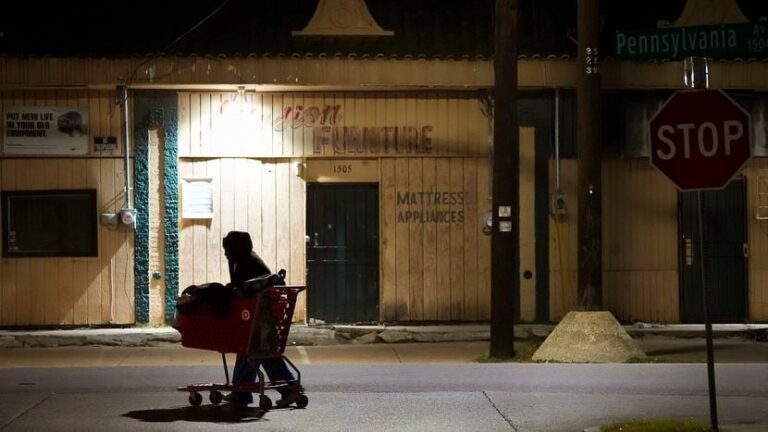Dallas and Collin counties are scheduled to count the number of homeless residents Thursday night for the federally mandated annual point-in-time count.
Housing Forward, the lead agency in the county's homelessness response network, and an army of volunteers will patrol the streets of a North Texas city. They search streets, wooded areas, under bridges and near the city center where many services are located to find residents who have not been evacuated.
Approximately 1,000 volunteers from homeless assistance nonprofits record how many people are experiencing homelessness each day. Data is used to track community trends.
“It's a snapshot of one night in January,” said Sarah Khan, interim CEO of Housing Forward. “This is the only measure available to us for both sheltered and unsheltered homelessness. [point-in-time count] We are able to combine both information from shelters and the number of unsheltered people to provide that estimate each year. ”
Overall homelessness in Dallas and Collin counties decreased by 4% from 2022 to 2023 due to increased efforts to close encampments, with an 18% increase in people moving into permanent housing.
The two counties also saw a 14 percent decrease in unhoused homelessness and a 32 percent decrease in chronic homelessness, meaning people without housing for more than a year and living with a disability.
“We've made a huge difference in how we approach homelessness,” Khan said. “And today, thanks to these efforts, more people can live than ever before.”
The homeless response systems in Dallas and Collin counties find homes for about 200 homeless people each month, up from just 80 per month in 2019, according to data from Housing Forward.
Due to the success of this system of rehousing people who have lost their homes, Housing Forward received an unprecedented level of federal funding and opened 480 new permanent supportive housing units, Khan said. .
Subpopulations of unhoused residents have shown double-digit increases since 2022, including veterans by 21%, youth by 18%, and families by 15%.
In Dallas and Collin counties, black households make up about 20% of the general population but 59.5% of the homeless population, according to data from Housing Forward.
“The data speaks clearly about the impact of structural inequalities, which consistently lead to very pronounced racial disparities in who becomes homeless and in Dallas and Collin counties. ,” Khan said. “I think overrepresentation just highlights the importance of our system continuing to prioritize racial equity.”
Housing Forward will present its findings at a homelessness address to the community in April.
More than 653,000 people nationwide will be homeless in 2023, a 12% increase from 2022, according to data from the Department of Housing and Urban Development.
From 2021 to 2022, the number of people experiencing first-time homelessness jumped by 25%. This is likely due to a combination of factors, including a tight rental housing market and the expiration of pandemic-era protections and eviction prevention programs.
According to 2023 HUD data, California has the highest number of unhoused residents in the nation at 181,000, followed by New York with 103,000, Florida with 30,700 and Washington with 28,000. People follow.
Texas ranks fifth in the nation with more than 27,000 people experiencing homelessness, a 12% increase from 2022. From 2021 to 2023, the number of homeless people across Texas increased by 58%.
Texas' statewide “continuum of care” covers a vast area of the state, excluding those near metropolitan areas, and served 9,065 unhoused residents in 2023.
Dallas and Collin counties had the highest number of unhoused residents of any metropolitan area in 2023, at 4,244. There are 3,270 people reported experiencing homelessness in the Houston area and 3,155 residents in Bexar County, San Antonio.
In Fort Worth County and the Arlington area, approximately 2,776 people were homeless in 2023, and in Austin and Travis counties, 2,374 people experienced homelessness.

